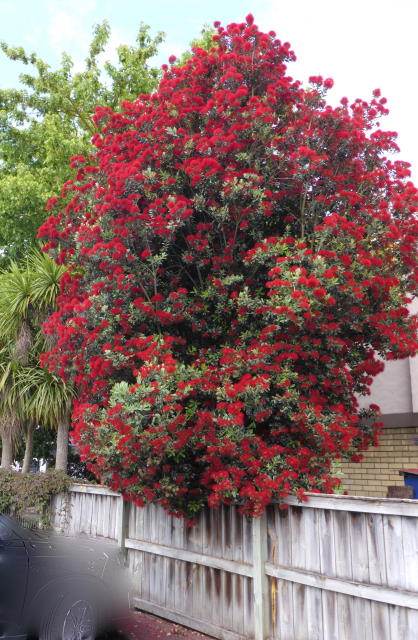Pōhutukawa, New Zealand Christmas tree (Metrosideros excelsa)

Seen here near the Senior Citizens Club, the Pōhutukawa can grow 20m high and almost twice as wide, moulding to the coastal wind and slope, and spreading its weight over unstable ground whilst sheltering the root system exposed on bare rock. But if you want to grow it at home for a Christmas tree it is very amenable to pruning, or can even be grown in a tub.
The first recorded association of Pōhutukawa with Christmas was as a table decoration at the celebrations of the Nga Puhi chief, Eruera Patuone, in 1857. This modern association with Christmas seems rather at odds with its traditional Māori connection with death. Pōhutukawa means ‘place of leaping’, and of course the most famous tree is the 800 year-old one at Cape Reinga which guards the entrance to the sacred cave from which the spirits of the dead begin their journey to Hawaīki. In Māori myth the red flowers represent the blood of the young warrior, Tawhaki, who fell to earth while trying to reach the heavens to avenge his father’s death. Pōhutukawa is also a star that connects Matariki to the deceased, and it is through Pōhutukawa that Māori remember those who have died in the past year.
For Māori the tree had a medicinal use; the inner bark, cut from the side of the trunk where the rising sun strikes the tree, was used to make an infusion for treating diarrhoea and venereal disease. The wood was used for making implements such as paddles and mauls. Europeans used the wood to form the curved parts of boat frames, in much the same way as they had used oak boughs in Europe.

